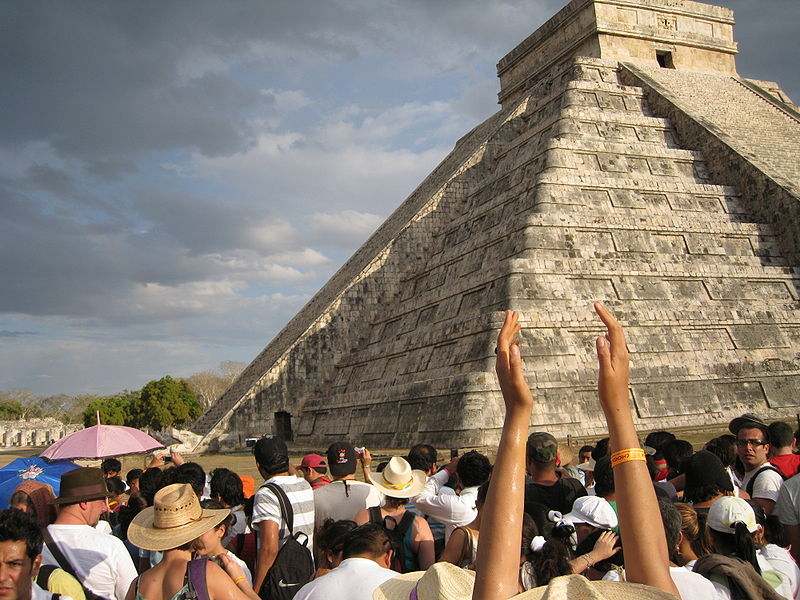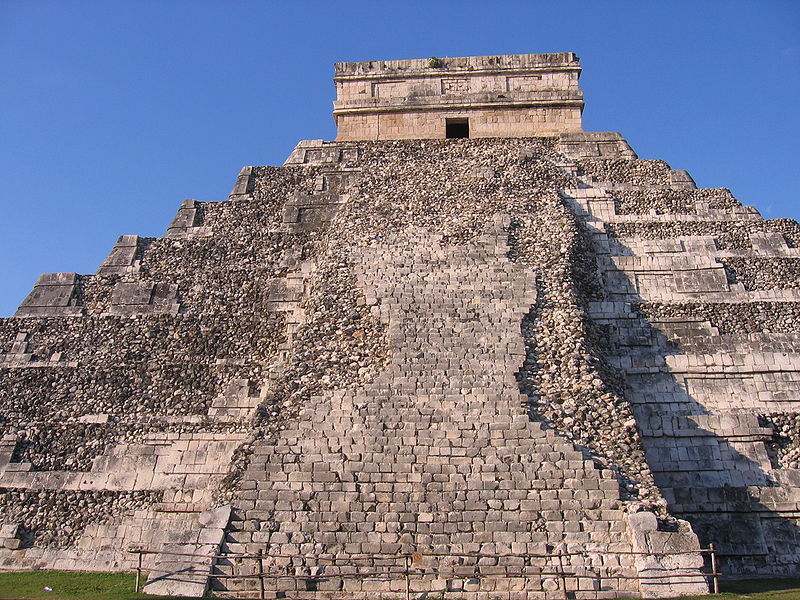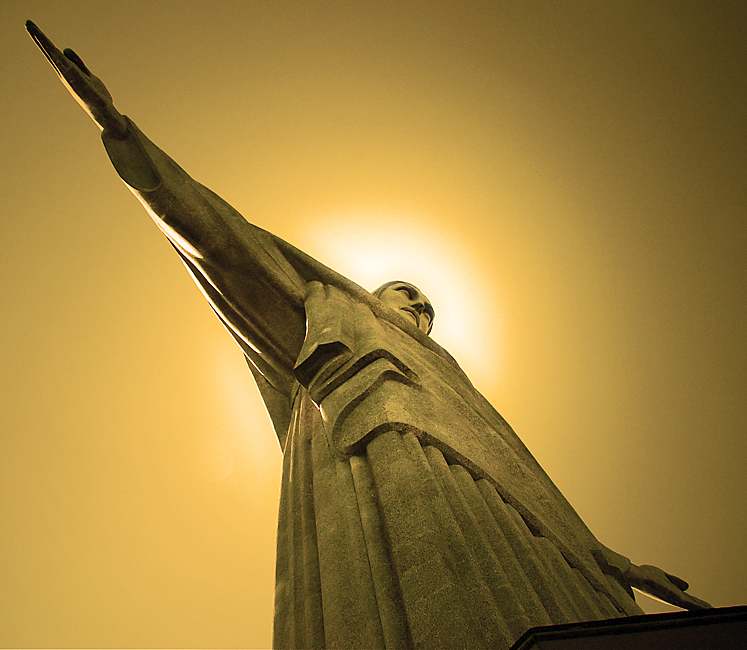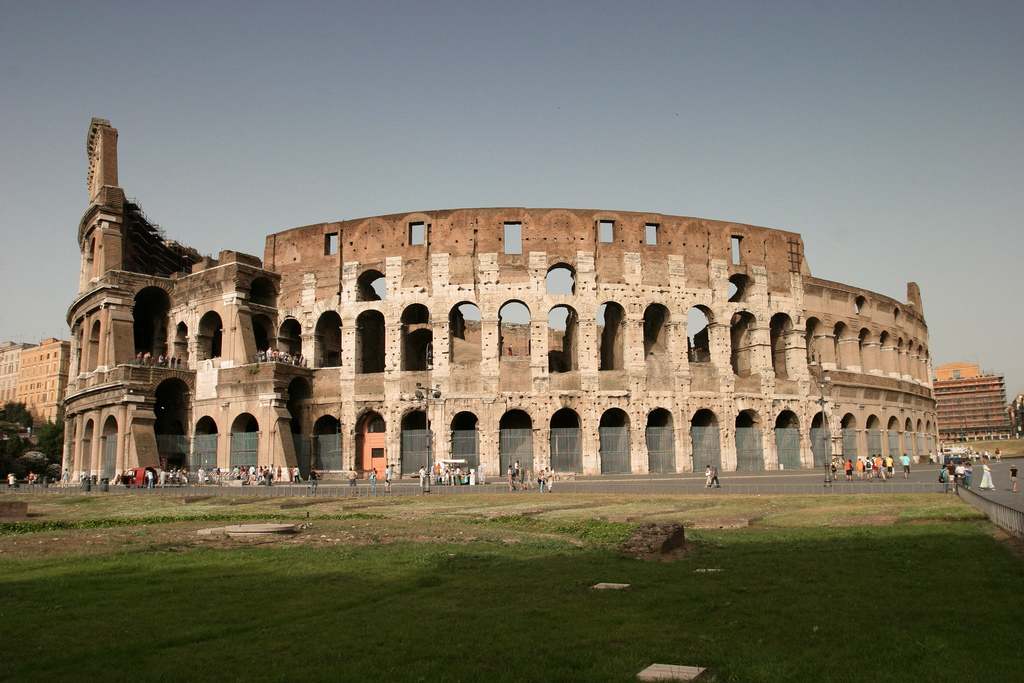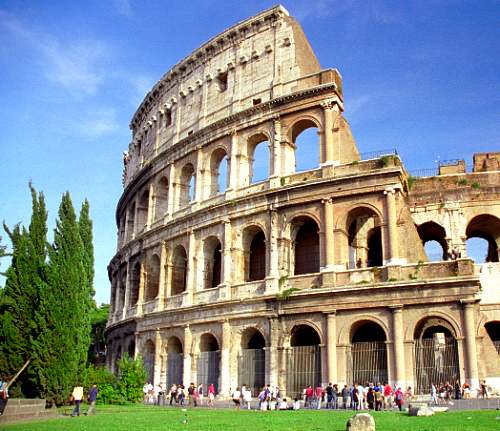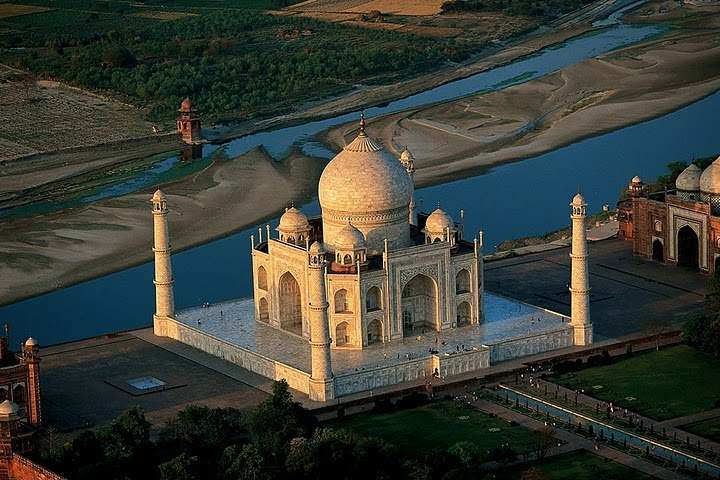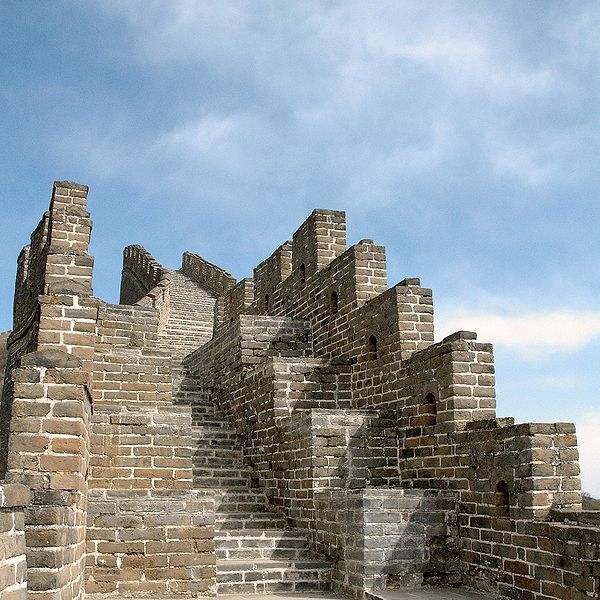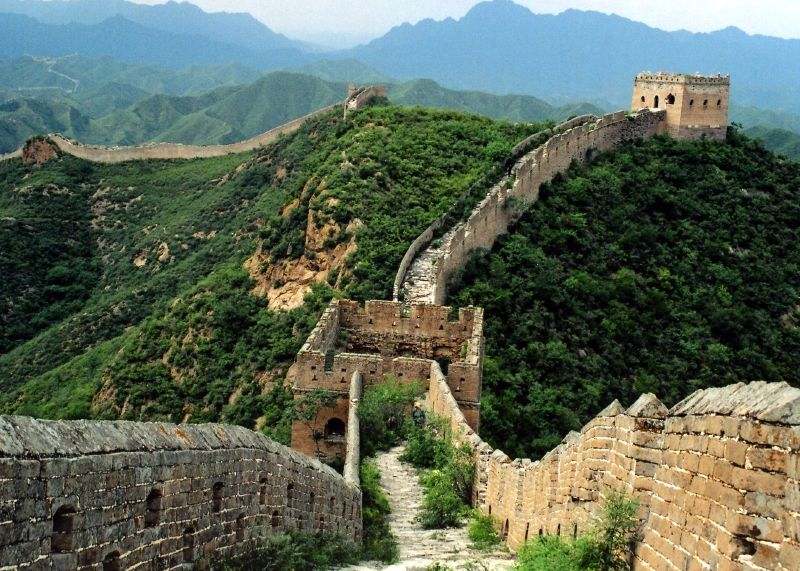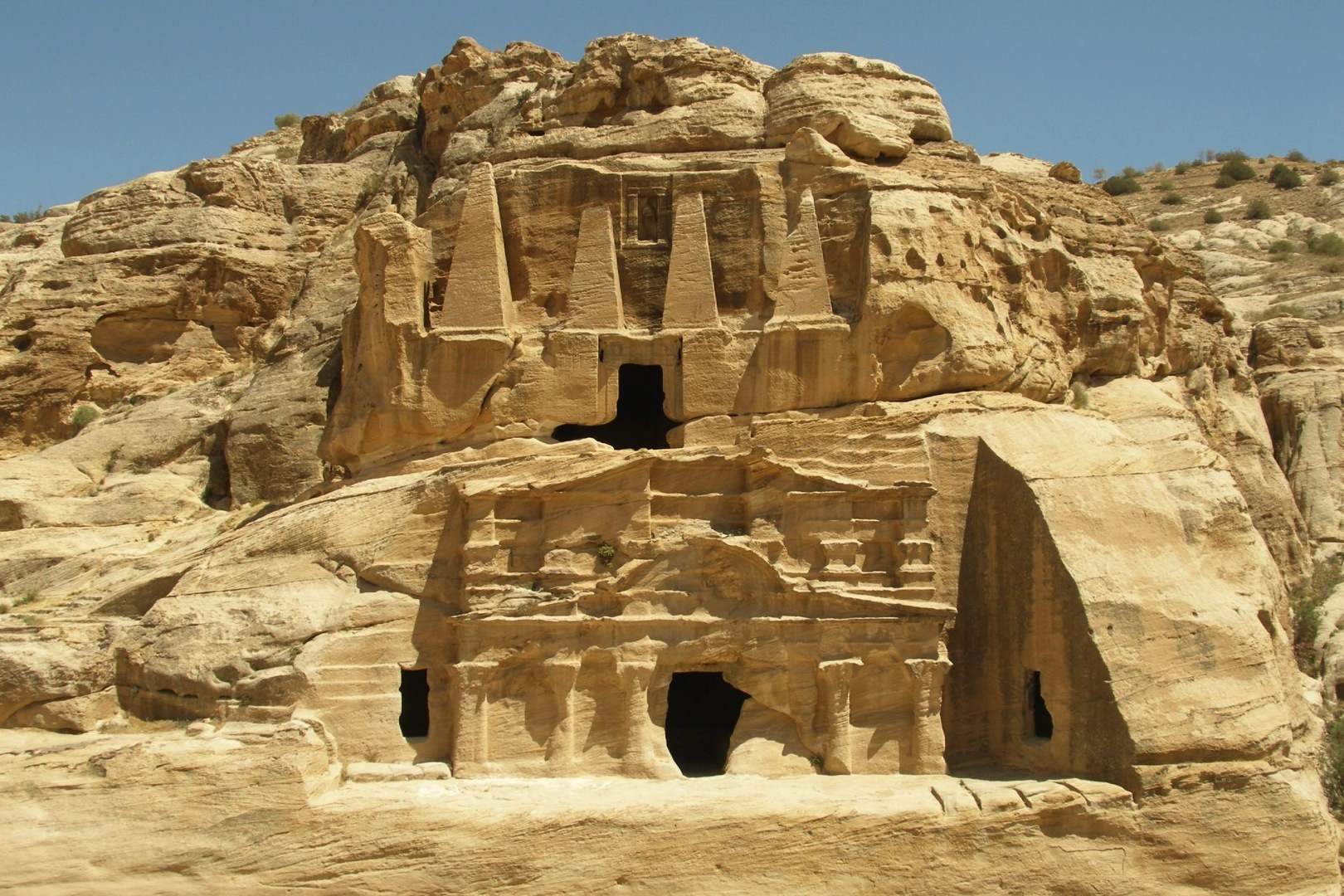சனி, 12 நவம்பர், 2011
செவ்வாய், 8 நவம்பர், 2011
தேசியச் சின்னங்கள்
தேசியச் சின்னங்கள்
நுழைவாயிலாக அமைந்துள்ள இந்தப் பகுதி இந்திய நாட்டின் அடையாளப் பொருட்களைப் பற்றிப் பேசுகிறது. இந்தச் சின்னங்கள் இந்திய நாட்டின் அடையாளம், மரபுரிமை ஆகியவற்றின் உள்ளார்ந்த வெளிப்பாடாகும். உலகம் முழுதும் உள்ள பல்வேறுபட்ட பின்னணியின் மாதிரிகளாக உள்ள இந்தியர்களின் பெருமைக்கு உரியதாக இத்தேசியச் சின்னங்கள் விளங்குகின்றன. இவை ஒவ்வொரு இந்தியனின் உள்ளத்திலும் பெருமிதத்தையும் நாட்டுப்பற்றையும் உண்டாக்குவதாக உள்ளன.
தேசியக் கொடி
தேசியக் கொடிச் சட்டம் 2002 என்பது 2002ஆம் ஆண்டு ஜனவரி மாதம் 26ஆம் நாள் முதல் நடைமுறைக்கு வந்தது. இது மற்றைய தேசிய கொடிச் சட்டங்களையெல்லாம் உள்ளடக்கியதாக இருந்தது. 2002 தேசியக் கொடிச் சட்டப் பிரிவின்படி பொதுமக்களால் தேர்ந்தெடுக்கப்பட்ட உறுப்பினர்கள், தனியார் அமைப்புகள், கல்வி நிறுவனங்கள் முதலிவை ஆகியவை பயன்படுத்துவதில் தடையேதுமில்லை. ஆனால், அடையாளச் சின்னங்கள் மற்றும் பெயர்கள் (முறையின்றி பயன்படுத்துவதைத் தடைசெய்யும்) சட்டம் -1950, தேசிய மதியாதைக்குரியவற்றை இழிவுபடுத்துவதைத் தடைசெய்யும் சட்டம் - 1971, இவை போன்ற வேறு சட்டங்களின் அத்துமீறக்கூடாது.
தேசியக் கொடிச் சட்டத்தைப் பற்றி மேலும் அறிந்துகொள்ளுங்கள்.
தேசியப் பறவை
தேசியப் பூ
தேசிய கீதம்
இந்திய தேசிய கீதம் பல்வேறு சந்தர்ப்பங்களில் பாட அல்லது ஒலிபரப்பப்படுகிறது. தேகிய கீதத்தின் சரியான வடிவத்தைப் பற்றி அவ்வப்பொழுது ஆணைகள் வெளியிடப்பட்டுள்ளன. எப்பொழுது பாட அல்லது ஒலிபரப்ப வேண்டும், அப்படிப்பட்ட சமயங்களில் எத்தகைய மரியாதை செலுத்தப்படவேண்டும் என்பனவற்றையும் அவை குறிப்பிடுகின்றன. பொதுவான தகவலுக்காகவும் வழிகாட்டுதலுக்காகவும் அத்தகைய ஆணைகளின் சாராம்சம் இத்தகவல் ஏட்டில் அதன் சிறப்பியல்பு கருதி கொடுக்கப்பட்டுள்ளன.
தேசிய கீதத்தின் முழுமையான, சுருங்கிய வடிவங்கள்
கவிஞர் ரவீந்திரநாத் தாகூர் வடிவமைத்த பாடலின் முதல் பத்தியின் சொற்களும் இசையும் 'ஜன கண மன' என்பதாகும். இதுவே இந்தியாவின் தேசிய கீதமாகும். அப்பாடல் பின்வருமாறு அமைந்துள்ளது.
ஜன கண மன அதிநாயக ஜய ஹே
பாரத பாக்ய விதாதா திராவிட உத்கல பங்கா விந்திய ஹிமாசல யமுனா கங்கா உச்சல ஜலதி தரங்கா தவ சுப நாமே ஜாகே தவ சுப ஆசிஸ மாகே காஹே தவ ஜய காதா ஜன கண மங்கள தாயக ஜய ஹே பாரத பாக்ய விதாதா ஜய ஹே ஜய ஹே ஜய ஹே ஜய ஜய ஜய ஜய ஜய ஹே இச்சுருங்கிய வடிவப் பாடலை சுமார் 20 வினாடிகளில் பாடவேண்டும்.ம ேலே உள்ளது தேசிய கீதத்தின் முழுவடிவம். இதை ஏறக்குறைய 52 வினாடிகளில் பாடவேண்டும். இத்தேசிய கீதத்தின் சுருங்கிய வடிவம், முழுப்பாடலின் முதல் அடியையும் கடைசி அடியையும் கொண்டது. ஜன கண மன அதிநாயக ஜய ஹே பாரத பாக்ய விதாதா ஜய ஹே ஜய ஹே ஜய ஹே ஜய ஜய ஜய ஜய ஜய ஹே |
தேசிய நதி
கங்கை அல்லது கேன்ஜஸ் இந்தியாவின் மிக நீண்ட நதியாகும். இது 2510 கி.மீ தூரத்திற்கு மலைகளின் மேல் ஓடிவருகிறது. இது, பகீரதி நதியாக, இமய மலையில் கங்கோத்திரி எனும் உருகும் பனிப்பாறைகள் நிறைந்த பனிப் பகுதியில் உருவாகிறது. இது பின்னர் அலகானந்தா, யமுனா, சன், கௌதமி, கோசி, காஹரா ஆகிய நதிகளோடு இணைந்து கொள்கிறது. உலகிலேயே வளமான விவசாய நிலத்தையும் நெருக்கமான மக்கள் தொகையையும் கொண்டது, கங்கை நதிப் படுகையே ஆகும்,. இது, ஒரு கோடி சதுரப் பரப்பளவை உள்ளடக்கியது. இதன் மேல் இரண்டு அணைகள் கட்டப்பட்டுள்ளன. ஒன்று ஹரித்துவாரில் உள்ளது. மற்றொன்று பராக்காவில் உள்ளது. இந்த ஆற்றில் மட்டுமே வாழும் கங்கை நதி டால்பின் என்னும் நீர்வாழ் உயிரினம் மிகவும் ஆபத்தான விலங்கினமாகும். கங்கையை, இந்துக்கள், இந்நிலஉலகின் மிகவும் புனிதமான ஆறாகப் கருதுகின்றனர். ஹரித்துவார், வாரனாசி, அலகாபாத் போன்ற கங்கையாற்றின் கரையில் அமைந்துள்ள பெருநகரங்களில் முக்கியமான சமயச் சடங்குகள் இதன் கரையிலேயே நடத்தப்படுகின்றன. இதன் பயணம் வங்காள விரிகுடாக் கடலில் சென்று முடிவடைவதற்கு முன்பாகப் பங்ளாதேஷில் உள்ள சுந்தரவனச் சதுப்புநிலத்தின் கழிமுகப் பகுதியில் இது அகன்று விரிவடைந்து காணப்படுகிறது.
தேசிய அடையாளச் சின்னம்
அசோகரின் சாரனாத் சிங்கத் தலைநகரில் இருந்து தழுவப்பட்டதாக இந்தத் தேசிய அடையாளச் சின்னம் உள்ளது. இதன் மூல வடிவத்தில் நான்கு சிங்கங்கள் எதிர் எதிர் திசையைப் பார்த்தபடி நின்று கொண்டிருக்கும். இது அலங்கார வேலைப்பாடமைந்த ஓரப் பகுதியை உடைய ஒரு மணிச்சட்டத்தின் மேல் நிறுவப்பட்டிருக்கும். அவ்வேலைப்பாட்டு ஓரப் பகுதியைச் சுற்றி அமைந்த பட்டையில் ஒரு யானை, ஒரு விரைந்தோடும் குதிரை, ஒரு காளை, ஒரு சிங்கம் ஆகியவற்றை மணி வடிவில் அமைந்த தாமரைப் பூவின் மேல் உள்ள சக்கரங்கள் இடை இடையே அமைந்து பிரித்துக் காட்டும். மெருகேற்றிய வழுவழுப்பான ஒரே பாறையில் இவைகள் செதுக்கப்பட்டுள்ளன. தலைநகரம் தர்ம சக்கரம் என்னும் சக்கர விதியினால் முடிசூடப்பட்டிருக்கும்.
1950 ஜனவரி 26இல் ஏற்றுக்கொள்ளப்பட்ட அரசின் அடையாளச் சின்னத்தில் மூன்று சிங்கங்கள் மட்டுமே பார்க்கும்படியாக இருக்கும். நான்காவது ஒன்று பார்வைக்குப் படாமல் மறைந்திருக்கும். மணிச்சட்டத்தின் நடுவில் உள்ள வேலைப்பாடமைந்த பட்டையில் வலப்பக்கம் காளையும் இடப்பக்கம் குதிரையும் வல, இடக் கடைக்கோடியில் அமைந்த சக்கரங்களின் வெளிச்சுற்றும் காணப்படும். மணி வடிவில் அமைந்த தாமரை விடப்பட்டிருக்கும். முண்டக உபநிடதத்திலிருந்து, வாய்மை மட்டுமே வெல்லும் என்னும் பொருளுடைய 'சத்தியமேவ ஜயதே' என்னும் சொற்கள் மணிச் சட்டத்தின் கீழ் தேவநாகரி வரிவடிவத்தில் பொறிக்கப்பட்டிருக்கும்.
தேசிய விலங்கு
பந்தேரா டைகிரிஸ் என்னும் அறிவியல் பெயரை உடைய பேராற்றல் பெற்ற புலி மேலே பட்டை பட்டையான கோடுகளை உடைய விலங்கு. இதன் மேல் உள்ள மஞ்சள் வண்ண மென்மயிர் தோலில் கருப்புப் பட்டைகள் காணப்படும். அதன் இனிய தோற்றம், வலிமை, விரைந்தோடும் இயல்பு, பேராற்றல் ஆகியவை இந்தியத் தேசிய விலங்கு என்னும் பெருமையைப் பெற்றுத் தந்தன. இதில் எட்டு வகைகள் கண்டறியப்பட்டுள்ளன. இவற்றில் இந்திய வகை என்னும் ராயல் பெங்கால் புலி, வடமேற்குப் பகுதியைத் தவிர இந்தியா முழுமையிலும் காணப்படுகிறது. மேலும் அண்டை நாடுகளான நேப்பாளம், பூட்டான், பங்களாதேஷ் ஆகியவற்றிலும் காணப்படுகின்றன. இந்த இனம் விரைவாகக் குறைந்து வருவதால் 'புலிச் செயல்திட்டம்' என்பது 1973 ஏப்ரலில் கொண்டுவரப்பட்டது. இதுவரை 27 புலிக் காப்பகங்கள் இச்செயல்திட்டத்தின் கீழ் 37,761 சதுர மைல் பரப்பளவில் நிறுவப்பட்டுள்ளன.
தேசியக் கனி
இது சதைப் பற்றான பழம். பழத்தபின் உண்ணலாம். காயாக இருக்கையில் ஊறுகாயாகப் பயன்படுத்தலாம். இதன் அறிவியல் பெயர் மங்கிபெரா இண்டிகா (Mangifera indica). இத்தகைய மாப் பழம் உலகின் வெப்பப் பகுதிகளில் ஏராளமாகப் பயிரடப்படும் முக்கியமான பழவகைகளில் ஒன்று. சாறு நிறைந்த இந்தப் பழத்தில் A, C, D ஆகிய விட்டமின்கள் பெருமளவில் உள்ளன. இந்தியாவில் வெவ்வேறு உருவத்தில், அளவில், நிறத்தில் 100க்கும் மேற்பட்ட வகைகள் உள்ளன. நினைவுக்கு எட்டாக் காலத்திலிருந்து இந்தியாவில் மாம்பழம் விளைவிக்கப்படுகிறது. இதன் பெருமையைக் கவி காளிதாசர் தம் கவிதைகளில் புகழ்ந்துள்ளார். மாவீரர் அலக்ஸாண்டரும் சீனப் பயணி யுவான் சுவாங்கும் இதனைச் சுவைத்துள்ளனர். மொகலாயப் பேரரசர் அக்பர் 100,000 மாமரங்களை தர்பங்காவில் வளர்த்தார். இந்த இடம் இப்பொழுது பீகாரில் லாகி பாஹ் என அழைக்கப்படுகிறது.
|
தேசியப் பாடல்
பக்கிம் சந்திர சட்டர்ஜியால் இயற்றப்பட்ட பாடலான வந்தே மாதரம் என்பது விடுதலைப் போராட்டத்தில் மக்களை உற்சாகத்துடன் ஈடுபடுத்துவதாக இருந்தது. ஜன கண மன என்னும் பாடலுக்கு இணையான மதிப்பு இதற்கு அளிக்கப்படுகிறது. 1896இல் கூடிய இந்திய தேசிய காங்கிரஸ் அரசியல் கூட்டத்தில் இது பாடப்பட்டது. இதன் முதல் பத்தி கீழ்வருமாறு அமைந்துள்ளது.
வந்தே மாதரம்!
சுஜலாம், சுபஹலாம், மலையஜ ஷிதலாம்,
ஷஷ்யஷியாமலம், மந்தரம்!
வந்தே மாதரம்!
ஷுப்பரஜ்யோச்ன புலகிட்யமினிம்
புல்லக்குசுமித துரமதல ஷோப்கினிம்
சுகாசினிம் சுமதுர பாஷினிம்,
சுகதம் வரதம் மந்தரம்!
வந்தே மாதரம், வந்தே மாதரம்!
இதனை ஆங்கில உரைநடையில் ஸ்ரீ அரவிந்தர் மொழிபெயர்த்துள்ளார். அப்பகுதி:
I bow to thee, Mother,
richly-watered, richly-fruited,
cool with the winds of the south,
dark with the crops of the harvests,
The Mother!
Her nights rejoicing in the glory of the moonlight,
her lands clothed beautifully with her trees in flowering bloom,
sweet of laughter, sweet of speech,
The Mother, giver of boons, giver of bliss.
சுஜலாம், சுபஹலாம், மலையஜ ஷிதலாம்,
ஷஷ்யஷியாமலம், மந்தரம்!
வந்தே மாதரம்!
ஷுப்பரஜ்யோச்ன புலகிட்யமினிம்
புல்லக்குசுமித துரமதல ஷோப்கினிம்
சுகாசினிம் சுமதுர பாஷினிம்,
சுகதம் வரதம் மந்தரம்!
வந்தே மாதரம், வந்தே மாதரம்!
இதனை ஆங்கில உரைநடையில் ஸ்ரீ அரவிந்தர் மொழிபெயர்த்துள்ளார். அப்பகுதி:
I bow to thee, Mother,
richly-watered, richly-fruited,
cool with the winds of the south,
dark with the crops of the harvests,
The Mother!
Her nights rejoicing in the glory of the moonlight,
her lands clothed beautifully with her trees in flowering bloom,
sweet of laughter, sweet of speech,
The Mother, giver of boons, giver of bliss.
தேசிய விளையாட்டு
இந்தியா, ஹாக்கி விளையாட்டில் நுழைந்த போது அதுவே வெற்றிவாகை சூடியது. இந்தியா எட்டு ஒலிம்பிக் தங்கப் பதக்கங்களை வென்று சாதனை படைத்துள்ளது. 1928 முதல் 1956 வரை ஹாக்கியில் இந்தியாவின் பொற்காலமாகத் திகழ்ந்தது. இச்சமயத்தில் தொடர்ச்சியாக ஆறு முறை ஒலிம்பிக் தங்கப் பதக்கத்தை இந்தியா வென்றது. இந்திய ஹாக்கிக் குழு 1975இல் உலகக் கோப்பையையும் அதனோடு வெள்ளி, வெங்கலப் பதக்கங்களையும் வென்றது. இந்தியன் ஹாக்கி பெட்ரேஷன் 1927இல் உலக அங்கீகாரத்தைப் பெற்று அனைத்துலக ஹாக்கி பெட்ரேஷனில் சேர்ந்தது. அது முதல் இந்தியாவின் ஹாக்கி வரலாறு தொடங்கியது. இந்தியா ஒலிம்பிக்கில் பங்கேற்றுத் தன் பொற்கால வரலாற்றைப் படைத்தது. இந்தியாவின் ஹாக்கிப் பயணம் பெறும் வெற்றியை ஈட்டித் தந்தது. இது விளையாடிய 21 போட்டிகளில் 18 வெற்றிகளைப் பெற்றது. பிரசித்தி பெற்ற தயான் சந் அனைவரின் கவனத்தையும் ஈர்த்துக் கண்கொட்டாமல் பார்க்கச் செய்யும் வகையில் இந்திய அணி போட்ட 192 கோல்களில் 100 கோல்களைப் போட்டார். இந்தப் போட்டி 1928இல் ஆம்ஸ்டர்டாமில் தொடங்கியது. குறுகிய காலத்தில் வெற்றியைக் குவிப்பது தொடர்ந்தது. 1932இல் லாஸ் ஏன்ஜல்ஸ் நகரிலும் 1932இல் பெர்லினிலும் இவ்வெற்றி தொடர்ந்தது. இதன் விளைவாக இந்தியா ஒலிம்பிக்கில் தொடர்ச்சியாக மூன்று முறை (hat-trick) தங்கப் பதக்கம் பெற்றது.
இந்தியா சுதந்திரம் அடைந்த பிறகு இந்தியக் குழு மற்றும் ஒரு ஹாட்ரிக் சாதனையை 1948இல் லண்டன் ஒலிம்பிக்கிலும் 1952இல் ஹல்சினிக் விளையாட்டுக்களிலும் மெல்பேர்ன் ஒலிம்பிக்கிலும் நிகழ்த்திக் காட்டியது. இப்பொற்காலத்தில் இந்தியா 24 ஒலிம்பிக் போட்டிகளில் விளையாடியது. 24இல் வென்றது. 178 கோல்களைப் போட்டது (சராசரியாக ஒவ்வொரு போட்டியிலும் 7.43 கோல்கள்). 7 கோல்களையே விட்டுக்கொடுத்தது. மற்ற இரண்டு தங்கப்பதக்கங்களை டோகியோவில் 1964இல் நடந்த ஒலிம்பிக்கிலும், 1980இல் மாஸ்கோ ஒலிம்பிக்கிலும் இந்தியா வென்றது.
National Symbols
National Symbols
This section of the portal talks about the National Identity Elements of India. These symbols are intrinsic to the Indian identity and heritage. Indians of all demographics backgrounds across the world are proud of these National Symbols as they instill a sense of pride and patriotism in every Indian's heart.
National Flag
The National Flag is a horizontal tricolour of deep saffron(kesaria) at the top, white in the middle and dark green at the bottom in equal proportion. The ratio of width of the flag to its length is two to three. In the centre of the white band is a navy-blue wheel which represents the chakra.Its design is that of the wheel which appears on the abacus of the Sarnath Lion Capital of Ashoka.
|
Its diameter approximates to the width of the white band and it has 24 spokes. The design of the National Flag was adopted by the Constituent Assembly of India on 22 July 1947.
Apart from non-statutory instructions issued by the Government from time to time, display of the National Flag is governed by the provisions of the Emblems and Names (Prevention of Improper Use) Act, 1950 (No. 12 of 1950) and the Prevention of Insults to National Honour Act, 1971 (No. 69 of 1971). The Flag Code of India, 2002 is an attempt to bring together all such laws, conventions, practices and instructions for the guidance and benefit of all concerned.
The Flag Code of India, 2002, took effect from 26 January 2002 and superseded the 'Flag Code-Indias' as it existed. As per the provisions of the Flag Code of India, 2002, there are no restriction on the display of the National Flag by members of general public, private organisations, educational institutions, etc., except to the extent provided in the Emblems and Names (Prevention of Improper Use) Act, 1950 and the Prevention of Insults to National Honour Act, 1971 and any other law enacted on the subject.
The Flag Code of India, 2002, took effect from 26 January 2002 and superseded the 'Flag Code-Indias' as it existed. As per the provisions of the Flag Code of India, 2002, there are no restriction on the display of the National Flag by members of general public, private organisations, educational institutions, etc., except to the extent provided in the Emblems and Names (Prevention of Improper Use) Act, 1950 and the Prevention of Insults to National Honour Act, 1971 and any other law enacted on the subject.
Know more about The Flag Code of India
National Flower
Lotus (Nelumbo Nucipera Gaertn) is the National Flower of India. It is a sacred flower and occupies a unique position in the art and mythology of ancient India and has been an auspicious symbol of Indian culture since time immemorial.
India is rich in flora. Currently available data place India in the tenth position in the world and fourth in Asia in plant diversity. From about 70 per cent geographical area surveyed so far, 47,000 species of plants have been described by the Botanical Survey of India (BSI).
National Bird
The Indian peacock, Pavo cristatus, the national bird of India, is a colourful, swan-sized bird, with a fan-shaped crest of feathers, a white patch under the eye and a long, slender neck. The male of the species is more colourful than the female, with a glistening blue breast and neck and a spectacular bronze-green tail of around 200 elongated feathers.
|
The female is brownish, slightly smaller than the male and lacks the tail. The elaborate courtship dance of the male, fanning out the tail and preening its feathers is a gorgeous sight.
National Tree
Indian fig tree, Ficus bengalensis, whose branches root themselves like new trees over a large area. The roots then give rise to more trunks and branches. Because of this characteristic and its longevity, this tree is considered immortal and is an integral part of the myths and legends of India. Even today, the banyan tree is the focal point of village life and the village council meets under the shade of this tree.
National Anthem
The National Anthem of India is played or sung on various occasions. Instructions have been issued from time to time about the correct versions of the Anthem, the occasions on which these are to be played or sung, and about the need for paying respect to the anthem by observance of proper decorum on such occasions. The substance of these instructions has been embodied in this information sheet for general information and guidance.
The National Anthem - Full & Short Versions
The composition consisting of the words and music of the first stanza of the late poet Rabindra Nath Tagore's song known as "Jana Gana Mana" is the National Anthem of India. It reads as follows:
The above is the full version of the Anthem and its playing time is approximately 52 seconds.
A short version consisting of the first and last lines of the National Anthem is also played on certain occasions. It reads as follows:
Jana-gana-mana-adhinayaka, jaya he
Bharata-bhagya-vidhata. Jaya he, jaya he, jaya he, Jaya jaya jaya, jaya he! Playing time of the short version is about 20 seconds. National River
The Ganga river basin is one of the most fertile and densely populated areas of the world and covers an area of 1,000,000 sq. kms. There are two dams on the river - one at Haridwar and the other at Farakka. The Ganges River Dolphin is an endangered animal that specifically habitats this river.
The Ganga is revered by Hindus as the most sacred river on earth. Key religious ceremonies are held on the banks of the river at cities such as Varanasi, Haridwar and Allahabad. The Ganga widens out into the Ganges Delta in the Sunderbans swamp of Bangladesh, before it ends its journey by emptying into the Bay of Bengal.
National Calendar
The national calendar based on the Saka Era, with Chaitra as its first month and a normal year of 365 days was adopted from 22 March 1957 along with the Gregorian calendar for the following official purposes:
Dates of the national calendar have a permanent correspondence with dates of the Gregorian calendar, 1 Chaitra falling on 22 March normally and on 21 March in leap year.
State Emblem
The wheel appears in relief in the centre of the abacus with a bull on right and a horse on left and the outlines of other wheels on extreme right and left. The bell-shaped lotus has been omitted. The words Satyameva Jayate from Mundaka Upanishad, meaning 'Truth Alone Triumphs', are inscribed below the abacus in Devanagari script.
National Animal
To check the dwindling population of tigers in India, ‘Project Tiger' was launched in April 1973. So far, 27 tiger reserves have been established in the country under this project, covering an area of 37,761 sq km.
National Song
The song Vande Mataram, composed in Sanskrit by Bankimchandra Chatterji, was a source of inspiration to the people in their struggle for freedom. It has an equal status with Jana-gana-mana. The first political occasion when it was sung was the 1896 session of the Indian National Congress.
The following is the text of its first stanza:
Vande Mataram!
Sujalam, suphalam, malayaja shitalam, Shasyashyamalam, Mataram! Vande Mataram! Shubhrajyotsna pulakitayaminim, Phullakusumita drumadala shobhinim, Suhasinim sumadhura bhashinim, Sukhadam varadam, Mataram! Vande Mataram, Vande Mataram!
The English translation of the stanza rendered by Sri Aurobindo in prose 1 is:
I bow to thee, Mother,
richly-watered, richly-fruited, cool with the winds of the south, dark with the crops of the harvests, The Mother! Her nights rejoicing in the glory of the moonlight, her lands clothed beautifully with her trees in flowering bloom, sweet of laughter, sweet of speech, The Mother, giver of boons, giver of bliss. National Fruit
|
the-new-7-wonders-of-the-world
The Pyramid at Chichén Itzá (before 800 A.D.) Yucatan Peninsula, Mexico

Credit: Wikipedia
Credit: Wikipedia
Christ Redeemer (1931) Rio de Janeiro, Brazil

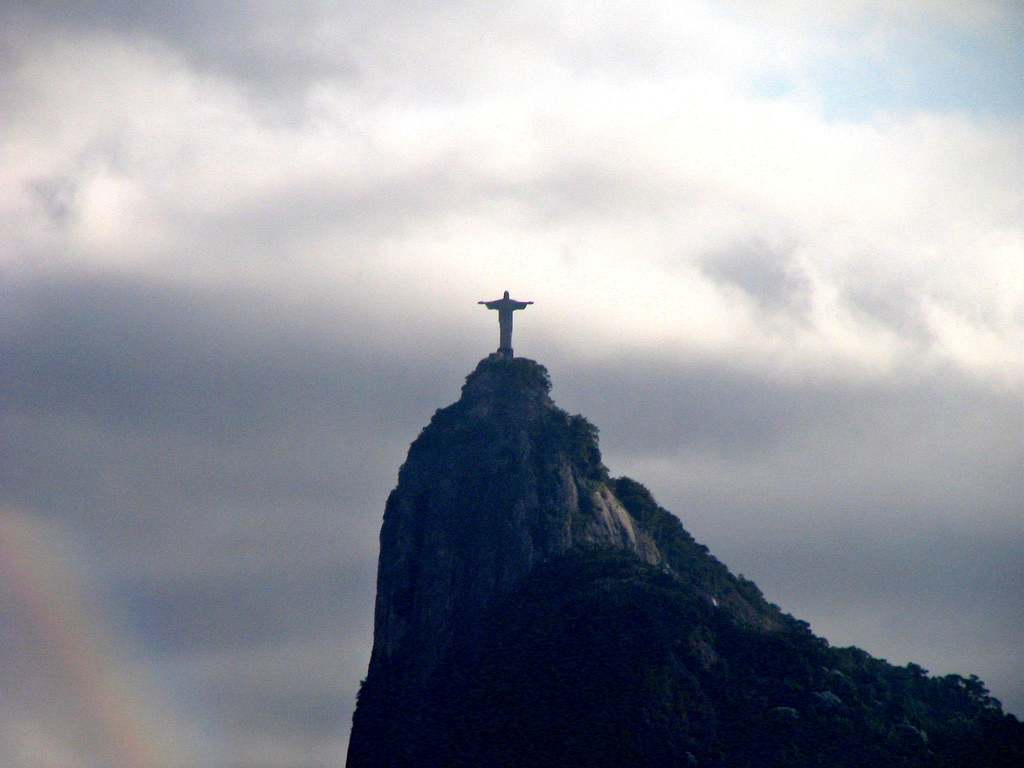
Credit: Billy Crafton via Flickr
Credit: bossa67 via Flickr
The Roman Colosseum (70 – 82 A.D.) Rome, Italy

Credit: nathangibbs via Flickr
Credit: David Paul Ohmer via Flickr
The Taj Mahal (1630 A.D.) Agra, India

Credit: voobie via Flickr
Credit: konradc via Picasa Web Albums
The Great Wall of China (220 B.C and 1368 – 1644 A.D.) China

Credit: Wikimedia
Credit: DragonWoman via Flickr
Petra (9 B.C. – 40 A.D.), Jordan

Credit: Wikimedia
Credit: Argenberb via Fotopedia
Machu Picchu (1460-1470), Peru

Credit: slack12 via Flickr
Credit: matito via Flickr
The Official New 7 Wonders of the World
|
|
இதற்கு குழுசேர்:
இடுகைகள் (Atom)


